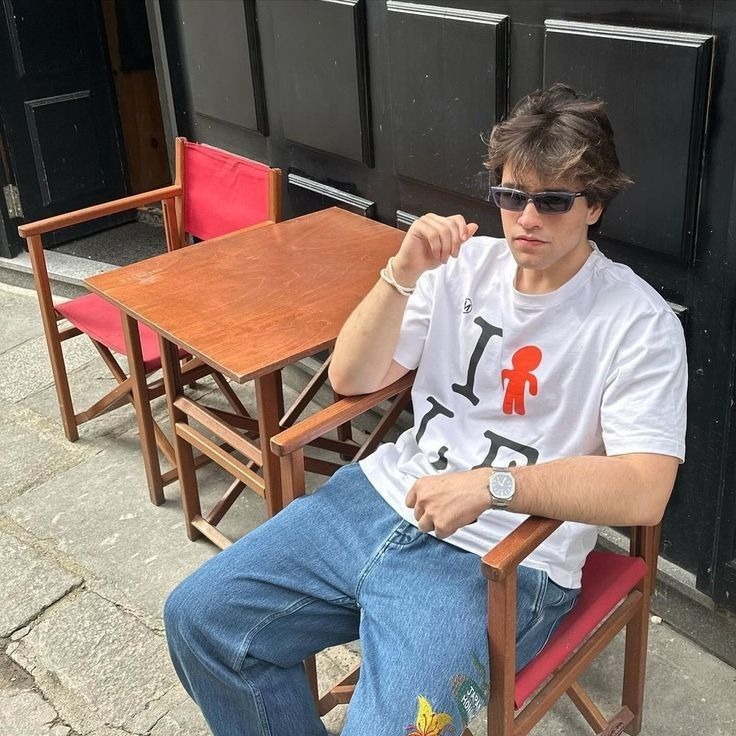The T-Shirt: A Timeless Classic and Fashion Essential

T-shirts are one of the most iconic and versatile garments in the fashion world. Worn by people of all ages, genders, and backgrounds, T-shirts have become more than just a basic clothing item—they are a canvas for self-expression, a symbol of cultural movements, and a staple in wardrobes across the globe. This article explores the fascinating history, cultural impact, stylistic versatility, and modern trends of T-shirts, highlighting why they remain a timeless classic.
A Historical Overview of the T-Shirt
The origins of the T-shirt date back to the late 19th and early 20th centuries. Initially designed as an undergarment, the T-shirt provided comfort and practicality for laborers and soldiers. Made from lightweight, breathable cotton, it allowed for better air circulation and ease of movement compared to traditional woolen garments.
During World War I, American soldiers observed European troops wearing lightweight, short-sleeved undershirts. Upon returning home, many adopted the T-shirt for casual wear, and its popularity began to spread. The term “T-shirt” itself was coined due to the garment’s distinctive T-shaped silhouette.
The 1950s marked a turning point in the T-shirt’s evolution. Hollywood actors like Marlon Brando in A Streetcar Named Desire and James Dean in Rebel Without a Cause popularized the T-shirt as outerwear, transforming it into a symbol of youthful rebellion and coolness. This shift solidified the T-shirt’s place in mainstream fashion.
Cultural Significance and Symbolism
T-shirts have long been a medium for cultural expression and social commentary. They serve as wearable billboards, allowing individuals to convey messages, showcase affiliations, and express creativity. From political slogans to band logos and artistic graphics, T-shirts have become a powerful tool for communication.
1. Political and Social Activism
T-shirts have played a pivotal role in activism and social movements. In the 1960s and 1970s, anti-war protests and civil rights movements saw the rise of slogan T-shirts bearing messages of peace, equality, and justice. Activists used these garments to amplify their voices and spread their messages.
2. Music and Pop Culture
Band merchandise, particularly graphic T-shirts featuring album art or tour dates, became a cultural phenomenon in the 1980s and 1990s. Fans proudly wore these shirts to show their loyalty and connection to their favorite musicians. The trend continues today, with vintage band tees remaining highly sought after.
3. Streetwear and Urban Fashion
The rise of streetwear culture in the late 20th century further cemented the T-shirt’s status as a fashion staple. Brands like Supreme, Stüssy, and Off-White incorporated graphic T-shirts into their collections, blending high fashion with urban aesthetics. The T-shirt became a symbol of authenticity, creativity, and individuality.
Why T-Shirts Are a Wardrobe Essential
Several factors contribute to the enduring popularity of T-shirts:
1. Comfort and Practicality
T-shirts are made from soft, breathable fabrics such as cotton, making them comfortable for everyday wear. Their lightweight and versatile design makes them suitable for various activities and climates.
2. Versatility
T-shirts can be styled in countless ways, from casual outfits with jeans to more polished looks when paired with blazers. They seamlessly transition from relaxed daytime wear to evening ensembles.
3. Personal Expression
Graphic T-shirts, in particular, allow individuals to showcase their personality, beliefs, and interests. Whether featuring a favorite quote, a piece of artwork, or a meaningful symbol, T-shirts provide a canvas for self-expression.
4. Affordability and Accessibility
T-shirts are generally affordable and widely available, making them accessible to people from all walks of life. This affordability encourages consumers to experiment with different styles and trends.
5. Sustainability and Innovation
The fashion industry’s shift toward sustainability has led to the production of eco-friendly T-shirts made from organic cotton, recycled materials, and biodegradable fibers. This evolution aligns with consumers’ growing interest in ethical and sustainable fashion choices.
Modern Trends in T-Shirt Fashion
T-shirt fashion continues to evolve, reflecting changing consumer preferences and cultural influences. Here are some of the current trends shaping the T-shirt landscape:
1. Oversized and Relaxed Fits
Oversized T-shirts have gained popularity in recent years, particularly among younger generations. This trend aligns with the broader embrace of relaxed, comfortable silhouettes in fashion.
2. Minimalist Designs
Clean, simple T-shirts with subtle logos or no graphics at all are becoming increasingly popular. Minimalist designs offer a sleek and sophisticated look that appeals to those who prefer understated fashion.
3. Vintage and Retro Styles
Nostalgia-driven fashion has fueled the demand for T-shirts featuring vintage-inspired graphics, faded colors, and retro themes. These designs tap into memories of past decades while adding a modern twist.
4. Customization and Personalization
Advances in printing technology have made it easier for consumers to create custom T-shirt designs. Personalized T-shirts allow individuals to express their creativity and stand out from the crowd.
5. Sustainable and Ethical Production
As consumers become more environmentally conscious, brands are prioritizing sustainability in T-shirt production. Eco-friendly materials, ethical manufacturing processes, and transparent supply chains are becoming standard practices.
How to Style T-Shirts for Different Occasions
T-shirts can be styled in countless ways to suit various occasions and preferences:
1. Casual Everyday Look
Pair a classic crewneck T-shirt with jeans and sneakers for an effortless, timeless outfit. Add a denim jacket for an extra layer of style.
2. Smart-Casual Ensemble
Elevate a plain T-shirt by wearing it under a tailored blazer. Combine with chinos and loafers for a polished yet relaxed look suitable for dinner outings or creative work environments.
3. Streetwear Aesthetic
Opt for an oversized graphic T-shirt paired with cargo pants or joggers. Complete the look with chunky sneakers and a cap for a contemporary streetwear vibe.
4. Layered Winter Outfits
In colder weather, layer a long-sleeve T-shirt under a flannel shirt or hoodie. This approach adds warmth and visual interest to your outfit.
5. Athleisure and Sporty Looks
Combine a performance T-shirt with gym shorts or leggings for a sporty and functional ensemble. Finish with sleek athletic sneakers and a crossbody bag.
The Future of T-Shirts in Fashion
As technology and sustainability continue to shape the fashion industry, the future of T-shirts looks promising and innovative:
1. Smart and Tech-Enabled T-Shirts
Wearable technology may soon integrate with T-shirts, allowing for features such as health monitoring, temperature regulation, and interactive displays.
2. Circular Fashion and Recycling
The push for circular fashion practices will likely lead to increased recycling and upcycling initiatives. T-shirts made from fully recyclable materials may become more prevalent.
3. Augmented Reality (AR) Integration
Imagine T-shirts that come to life through AR experiences viewed via smartphones or smart glasses. This technology could revolutionize graphic T-shirt designs.
4. Hyper-Personalization
Advances in customization technology will enable consumers to create highly personalized T-shirts with intricate designs tailored to their preferences.
Conclusion
The T-shirt’s journey from a simple undergarment to a fashion icon highlights its adaptability, cultural significance, and enduring appeal. As a canvas for creativity, a symbol of self-expression, and a staple of modern wardrobes, the T-shirt continues to evolve and thrive. Whether adorned with bold graphics, styled for sophistication, or crafted from sustainable materials, the T-shirt remains a timeless testament to the power of simplicity and innovation.
